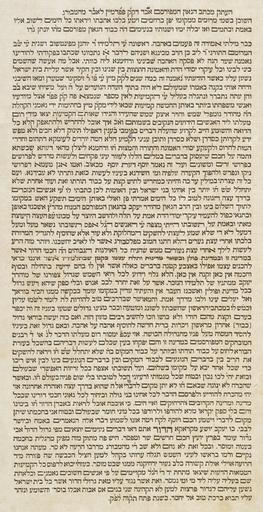MAKE A MEME
View Large Image

| View Original: | Azharah Aharonah.jpg (1026x1994) | |||
| Download: | Original | Medium | Small | Thumb |
| Courtesy of: | commons.wikimedia.org | More Like This | ||
| Keywords: Azharah Aharonah.jpg en Azharah Aharonah Final Warning Rabbi Jacob Joshua Falk Amsterdam 11 Sivan 5511 4 June 1751 The controversy over the alleged Sabbatianism of Jonathan Eybeschuetz engendered numerous publications of a polemical nature both in book form and as broadsheets such as the present lot Though the first attack on Eybeschuetz had come from Jacob Emden by far the most important rabbinical figure involved in the fray was Rabbi Jacob Joshua Falk Chief Rabbi of Frankfurt on Main and generally recognized as the senior and most authoritative rabbi in an age of rabbinic titans Eybeschuetz was widely acknowledged as being among the greatest Talmudists of the generation As long as the accusations against him were the product of Jacob Emden a man of lesser renown who also had a not undeserved reputation for disrespect of certain prominent rabbinical figures Eybeschuetz was content to allow his pupils to answer the charges on his behalf When one of these students Haim of Lublin led the movement to excommunicate Emden the battle lines were drawn On 11 Sivan 5511 4 June 1751 in what is written as if it were a private letter to Eybeschuetz Rabbi Falk a longtime opponent of the Sabbatian heresy indicates that he had previously written privately to Eybeschuetz on two separate occasions in an effort to defuse the situation The purpose of the private correspondence says Falk was to avoid the further desecration of God's name amongst both Jews and Gentiles and to effect a reconciliation between Emden and Eybeschuetz Falk reports however that no response from Eybeschuetz had been forthcoming After expounding on the heretical nature of the amulets Falk takes Eybeschuetz to task not only for ignoring my advice to quell this dispute but you rather fanned the flames by following the advice of children specifically alluding to the meddling of Eybeschuetz' student Haim of Lublin whose inferiority relative to Emden he emphasizes in both Talmudic and rather poetic terms Falk concludes by reminding Eybeschuetz that he could still turn from his misguided ways as had others who were in the past seduced by the Sabbatian heresy by presenting himself as a penitent before a rabbinical court of the leading rabbis of the day If Eybeschuetz should not heed this Azharah Aharonah or final warning Falk will have no choice but to publicize the matter using the full weight of his position within the rabbinic establishment and to employ all means necessary The events that followed the writing of the letter were the subject of acrimonious dispute between the two camps According to Eybeschuetz the letter was printed as the present broadside and made public before the original ever reached him He accused Falk in the strongest terms of having been dishonest concerning the privacy of the missive The vituperative response of Eybeschuetz only served to heighten the level of acrimonious dissension that existed in Jewish communities across Europe The toxic atmosphere that permeated this debate would impair the status of rabbinical authority for decades to come The words of Falk are followed by an addendum by the printer calling attention to the forthcoming publication of the actual texts of the amulets in question as well as the collected letters of the many rabbinic luminaries aligned against Eybeschuetz The printer's remarks also include a chronogram for the year 5511 The forthcoming work being referenced Sefat Emet ve-Lashon Zehorit would be published the following year in 1752 and would include the text of this letter With the date of the publication of the letter being an integral part of the ongoing dispute however the final sentence including the chronogram was not included The exact date of the letter is known today due to its having been referenced in the later correspondence of Falk 1751 http //www sothebys com/en/auctions/ecatalogue/2010/important-judaica-n08691/lot 167 html Sotheby's Rabbi Jacob Joshua Falk other versions PD-Art Sabbateans Rabbinic texts | ||||